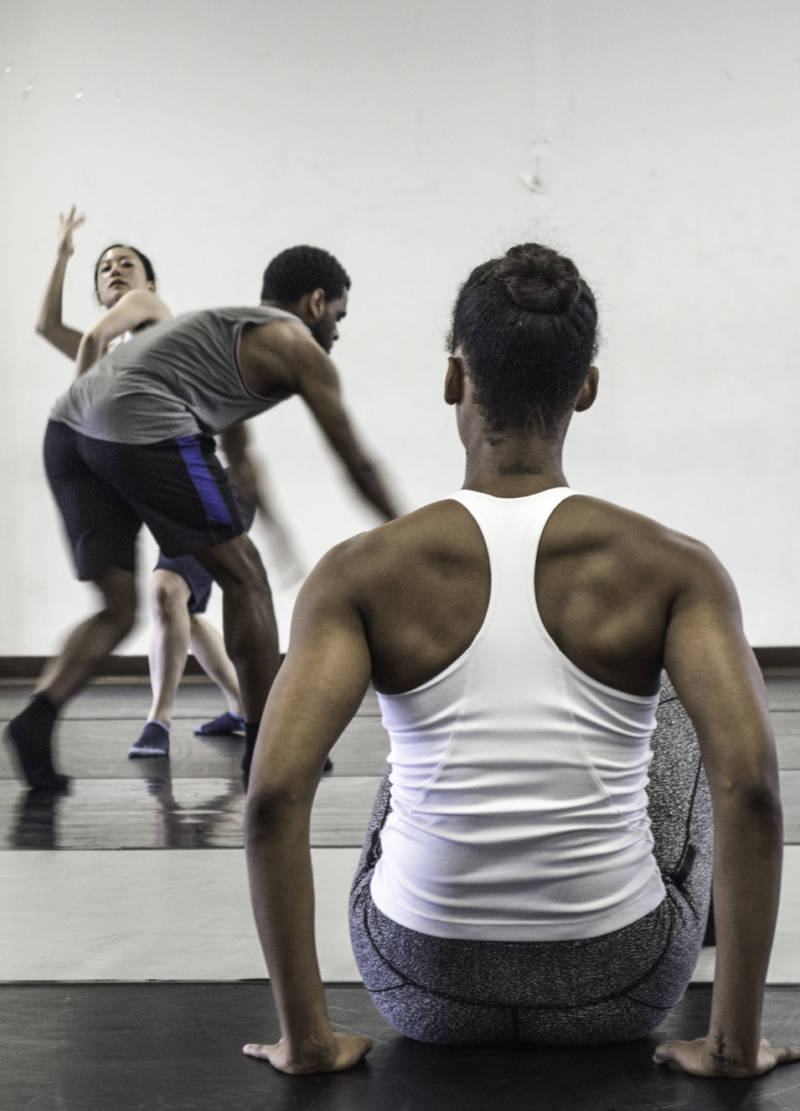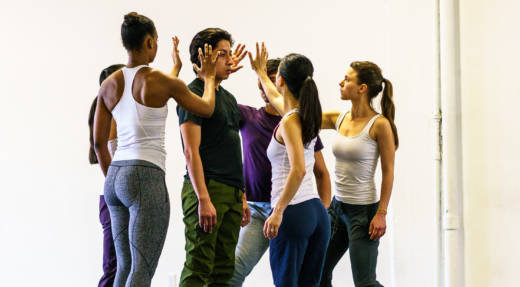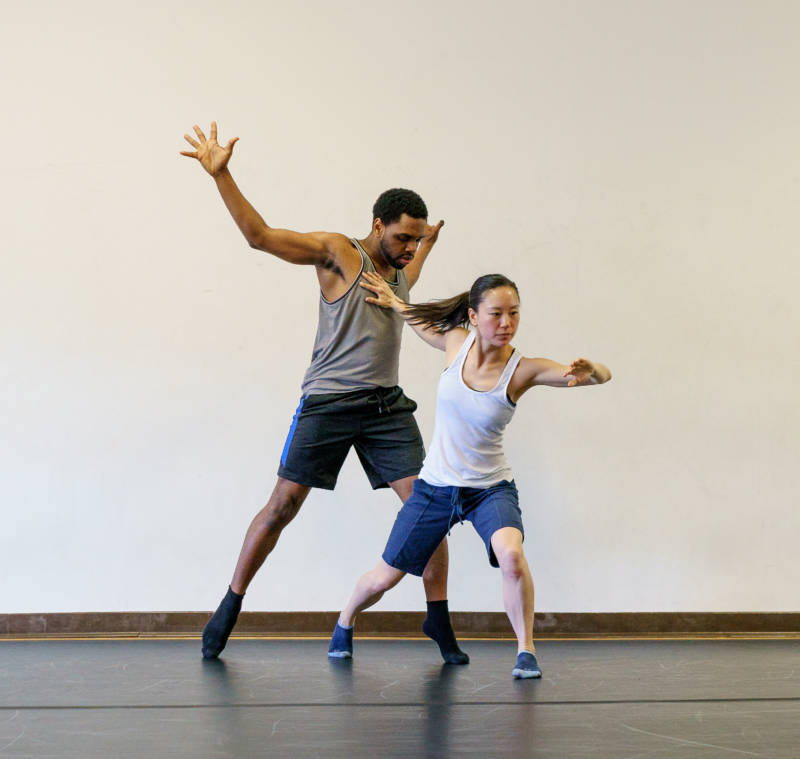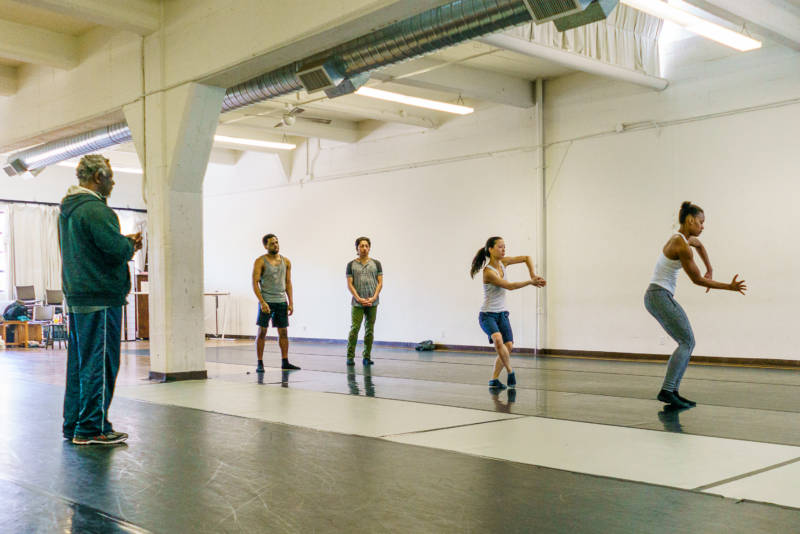“When I’m through burying children, who will bury me?”
That’s the mournful chant that opens the latest offering from Robert Moses’ Kin. Titled Trick Bags/Trap Doors/Painted Corners, the three-part, evening-length collaboration between choreographer Robert Moses and guest choreographers Terence Marling and Latanya d. Tigner is billed as a reflection on the “cultural time bombs” created when children are raised to “buy into the ideas of colorblindness and meritocracy.”
Even without that precise and chilling backgrounder, the provocative score clearly situates the work in the divisive political landscape of today’s America. Yet the fabric of the triptych is woven so loosely that it doesn’t entirely hang together. The professed theme of raising children in an insidiously racist environment seems to give way to mysterious yet absorbing rituals of community.

Moses choreographs the opening section of the triptych to a score crafted by recording artist/drummer PC Muñoz. It features parts of the soundtrack from The New York Times mini-documentary A Conversation with Black Women on Race and a glorious, pulsating song tinged with gospel, Latin American and West African rhythms titled “DIRT,” performed by the Oakland-based a cappella ensemble SoVoSó.
Moses does not use movement to reenact the spoken narrative elements in the soundtrack that touch on violence, lynchings, and subtler acts of racism. Instead, the choreographer punctuates them with finely drawn anguish, irony and humor.





